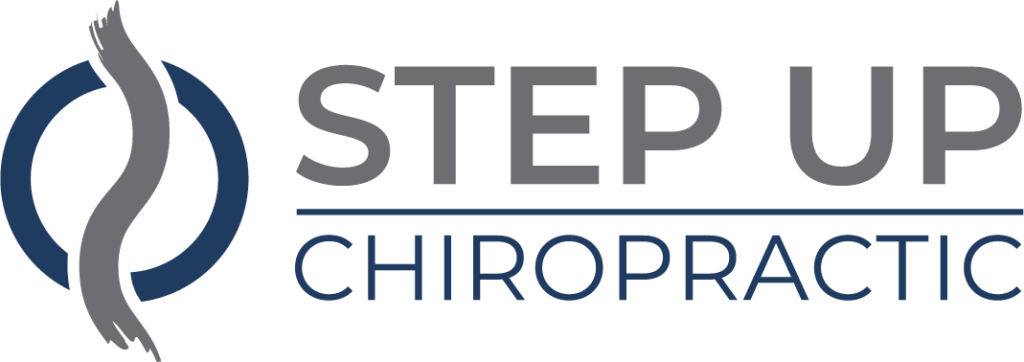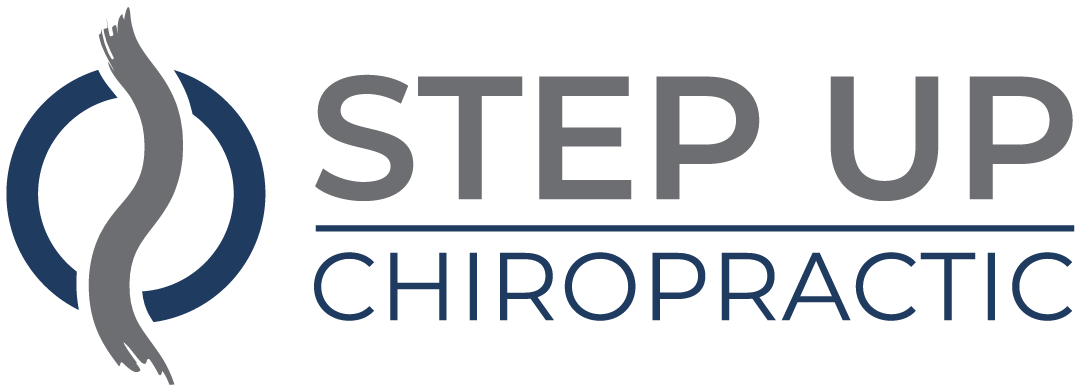When you consider enhancing your joint flexibility and movement, it's crucial to identify techniques that truly work. You might find that a combination of static and dynamic stretching, alongside practices like yoga and Pilates, can greatly improve your range of motion. Each method offers unique benefits, but there's more to it than just stretching. Understanding how to integrate these approaches effectively can make all the difference in your routine. Curious about which specific techniques might resonate most with your needs?
Understanding Joint Flexibility
Joint flexibility is essential for maintaining overall mobility and preventing injuries, and understanding it can greatly enhance your physical performance. When you think about joint flexibility, consider how it affects your daily movements and activities. Flexibility refers to the range of motion around your joints, and it varies from person to person. Factors like age, genetics, and activity levels play significant roles in how flexible your joints are.
To grasp joint flexibility, start by recognizing the different types of joints in your body. Hinge joints, like your knees and elbows, allow movement in one direction, while ball-and-socket joints, such as your hips and shoulders, enable a wider range of movement.
The connective tissues—ligaments, tendons, and muscles—surrounding these joints are vital in determining flexibility. If these tissues are tight, your range of motion decreases, increasing the risk of strains or sprains.
You can improve joint flexibility through various techniques, including stretching and mobility exercises. Static stretching involves holding a stretch for a specific period, targeting particular muscle groups. Dynamic stretching, on the other hand, incorporates movement to warm up your muscles and joints.
Additionally, incorporating yoga or Pilates into your routine can enhance flexibility while also improving strength and balance.
Importance of Warm-Up Exercises
Warm-up exercises play an essential role in preparing your body for physical activity. They increase your heart rate and blood flow to your muscles, making them more pliable and ready for action. When you engage in a proper warm-up, you reduce the risk of injuries and improve your overall performance. Think of it as getting your body into the right gear; without it, you're at a higher risk of strains and other injuries.
By gradually elevating your body temperature, warm-ups help enhance your flexibility and range of motion. This can be particularly important for joints that may feel stiff or tight. You'll find that incorporating movements that mimic the activity you're about to perform can help your joints adapt better to the demands ahead. Dynamic stretches, like leg swings or arm circles, can be particularly effective in this regard.
Moreover, warm-ups also prepare your mind for the upcoming physical challenge. They allow you to mentally focus and set your intentions for the workout or competition. When you're mentally prepared, you're more likely to push through discomfort and achieve your goals.
Incorporating a consistent warm-up routine into your exercise regimen isn't just beneficial; it's vital for maximizing your performance and ensuring long-term joint health.
Benefits of Yoga Practices
Practicing yoga offers a multitude of benefits that extend far beyond just flexibility. You'll discover that yoga enhances your overall physical health, improves mental clarity, and promotes emotional well-being. When you engage in yoga, you're not only stretching your muscles but also strengthening them. This leads to a more balanced body, reducing the risk of injuries and enhancing your performance in various physical activities.
Moreover, yoga encourages mindfulness and self-awareness. As you focus on your breath and movements, you'll cultivate a deeper connection with your body, allowing you to recognize and address tension or discomfort more effectively. This heightened awareness can translate into your everyday life, helping you manage stress and anxiety better.
Another significant benefit is improved posture. Many yoga poses reinforce proper alignment, which can alleviate chronic pain and discomfort associated with poor posture. By practicing regularly, you'll create a more stable foundation for your joints, which can lead to smoother, more fluid movements.
Additionally, yoga supports better circulation, which is essential for joint health. Increased blood flow nourishes your muscles and joints, facilitating recovery and reducing stiffness.
You'll also find that the deep breathing techniques practiced in yoga can enhance lung capacity, promoting better oxygenation throughout your body.
Incorporating Pilates Techniques
To enhance your joint flexibility, incorporating Pilates techniques into your routine can be incredibly effective. Pilates focuses on controlled movements and proper alignment, which helps you develop strength, flexibility, and balance. By engaging your core and paying attention to your body's positioning, you can access greater mobility in your joints.
Here are some key benefits you might experience when integrating Pilates into your flexibility routine:
- Increased body awareness: You'll become more attuned to how your body moves, allowing you to identify areas that need improvement.
- Improved posture: Stronger core muscles lead to better alignment, reducing tension in your joints and enhancing overall flexibility.
- Enhanced muscle strength: By targeting specific muscle groups, Pilates helps create a balanced body, which can support your joints during movement.
- Reduced risk of injury: With better flexibility and strength, you'll lower your chances of strains or sprains during physical activities.
- Stress relief: The mindful nature of Pilates can help you relax, allowing your body to release tightness and improve your overall well-being.
Incorporating exercises like the Pilates Hundred, Roll-Up, and Leg Circles can specifically target your flexibility goals.
As you practice regularly, you'll notice a remarkable difference in your joint mobility.
Dynamic Stretching Methods
Dynamic stretching is a powerful way to boost your flexibility and prepare your body for activity.
You'll find that incorporating effective dynamic techniques can enhance your performance and reduce the risk of injury.
Let's explore the key benefits of dynamic stretching and some practical methods to get you started.
Benefits of Dynamic Stretching
Often overlooked, dynamic stretching offers numerous benefits that can enhance your overall performance and flexibility. By incorporating dynamic stretches into your routine, you'll not only prepare your body for physical activity but also experience several advantages that can elevate your workouts.
- Increased Range of Motion: You'll notice improved flexibility, allowing for deeper movements and better form.
- Enhanced Blood Flow: Warming up through dynamic stretching boosts circulation, ensuring your muscles are primed for action.
- Reduced Risk of Injury: By preparing your joints and muscles, you'll minimize the chances of strains or sprains during workouts.
- Improved Coordination: Engaging in dynamic stretches enhances your balance and coordination, making your movements more fluid.
- Boosted Performance: With your body ready to go, you'll likely see improvements in strength, speed, and agility.
Incorporating dynamic stretching into your warm-up routine isn't just a good idea; it's crucial for getting the most out of your workouts.
Effective Dynamic Techniques
As you prepare for your workout, incorporating effective dynamic stretching techniques can greatly enhance your performance. Dynamic stretching gets your muscles warm and ready for action, improving your range of motion and reducing the risk of injury.
Start with leg swings: stand next to a wall for balance and swing one leg forward and backward, gradually increasing the range. This activates your hip flexors and hamstrings.
Next, try arm circles; extend your arms and make small circles, progressively increasing the size. This warms up your shoulders and upper body.
Walking lunges are another excellent choice. Step forward into a lunge, keeping your front knee aligned with your ankle, and alternate legs as you move forward. This technique stretches your hip flexors and engages your quads.
Finally, incorporate torso twists. Stand with your feet shoulder-width apart and rotate your upper body side to side, which promotes spinal mobility.
Role of Foam Rolling
Foam rolling plays an essential role in enhancing joint flexibility and overall mobility. By using a foam roller, you can effectively target tight muscles and fascia, releasing tension that may hinder your range of motion. This self-myofascial release technique not only helps in reducing muscle soreness but also prepares your body for more dynamic movements.
When you incorporate foam rolling into your routine, you're likely to experience several benefits:
- Improved circulation: You'll notice better blood flow, aiding in muscle recovery.
- Increased flexibility: Tight spots will loosen up, allowing for greater movement.
- Pain relief: Regular rolling can alleviate discomfort, making activities more enjoyable.
- Enhanced performance: With greater mobility, your workouts can become more effective and rewarding.
- Mental clarity: The process can be meditative, relieving stress and focusing your mind.
To get started, spend just a few minutes rolling over tight areas before or after your workouts. Focus on your major muscle groups, such as your quads, hamstrings, back, and calves.
As you roll, you'll want to pause on any knots or trigger points, applying gentle pressure. Over time, you'll likely find that your joints move more freely, making it easier to engage in all sorts of physical activities.
Foam rolling isn't just a trend; it's a powerful tool that can transform how you feel in your body. So grab that roller and roll your way to improved flexibility!
Active Release Techniques
Active Release Techniques (ART) focus on identifying and treating soft tissue restrictions that can impact your joint flexibility.
By applying targeted pressure and movement, ART helps break down adhesions, improving your overall range of motion.
You'll find that incorporating these techniques can lead to significant benefits for your joints and overall mobility.
Mechanism of Active Release
The mechanism behind Active Release Techniques (ART) revolves around the targeted application of pressure and movement to release tension in muscles and fascia. When you engage in ART, you're not just passively waiting for relief; you're actively participating in your recovery.
This method involves specific movements combined with pressure applied to the affected areas, breaking down adhesions and restoring mobility.
Here's what you can expect when you experience ART:
- Immediate relief from muscle tightness
- Enhanced range of motion in joints
- Reduced pain during everyday activities
- Improved posture and alignment
- Greater overall body awareness and control
As you go through the ART process, you'll notice how your body responds to this focused technique. By addressing specific muscle groups and movements, you're empowering yourself to reclaim flexibility and function.
ART is about understanding your body's needs and taking action to meet them. Through this hands-on approach, you're working with a practitioner who guides you, teaching you how to listen to your body and respond effectively.
Embrace the journey of self-care and movement!
Benefits for Joint Flexibility
When you incorporate Active Release Techniques (ART) into your routine, you'll discover notable benefits for joint flexibility. ART targets the soft tissues around your joints, breaking down adhesions and scar tissue that can limit your range of motion. By addressing these issues, you'll find that your joints can move more freely, enhancing overall flexibility.
You'll also notice improved circulation in the targeted areas. As ART works on muscle and connective tissue, it increases blood flow, which brings essential nutrients to your joints and helps remove waste products. This enhanced circulation can remarkably reduce stiffness and discomfort, making it easier for you to engage in daily activities or sports.
Moreover, ART promotes better alignment of your muscles and joints. When your body is aligned correctly, it can lead to more efficient movement patterns. You'll likely experience less strain and a lower risk of injuries.
Lastly, incorporating ART into your regimen can boost your overall athletic performance. Improved joint flexibility allows for deeper movements, whether you're running, jumping, or lifting. By enhancing your flexibility with ART, you're setting the stage for a more active and fulfilling lifestyle.
Mobility Drills for All Ages
Mobility drills can greatly enhance flexibility and joint function for individuals of all ages. Whether you're a child just starting out in sports or an adult looking to maintain an active lifestyle, incorporating mobility drills into your routine is key.
These drills not only improve your range of motion but also help prevent injuries, keeping you moving freely and confidently.
Here are five benefits of mobility drills that'll inspire you to get started:
- Increased Flexibility: You'll notice improved movement in your daily activities, making everything from bending to reaching easier.
- Enhanced Performance: Whether you're playing a sport or just enjoying a walk, greater mobility boosts your overall performance.
- Pain Reduction: Regularly practicing mobility drills can alleviate joint pain and discomfort, allowing you to enjoy life without limitations.
- Better Posture: Improved mobility contributes to better posture, reducing strain on your back and neck.
- Confidence in Movement: As you become more flexible, you'll feel more confident in your body's capabilities, empowering you to try new activities.
To get started, consider simple mobility drills like hip circles, ankle rolls, and shoulder shrugs. You don't need fancy equipment—just a little space and your own body.
Incorporate these exercises into your warm-up routine or dedicate a few minutes each day to them. No matter your age or fitness level, mobility drills can be a game-changer in enhancing your overall joint health and flexibility.
Nutrition for Joint Health
When it comes to joint health, what you eat plays a vital role.
You need to focus on essential nutrients that support your joints and incorporate anti-inflammatory foods into your diet.
Essential Nutrients for Joints
Supporting your joints with the right nutrients is essential for maintaining flexibility and overall health. When you nourish your body with the right elements, you help safeguard your joints against wear and tear, ensuring you can move with ease.
Here are some essential nutrients you should focus on:
- Omega-3 fatty acids: These healthy fats can reduce stiffness and improve joint function.
- Vitamin D: It plays a critical role in calcium absorption, helping to keep your bones strong.
- Calcium: Essential for bone health, it supports the structures surrounding your joints.
- Collagen: This protein helps maintain cartilage, promoting smoother joint movement.
- Antioxidants: Vitamins C and E can protect joints from oxidative stress and inflammation.
Incorporating these nutrients into your diet can lead to significant improvements in your joint health.
Consider foods rich in these essential elements, and you'll likely notice increased flexibility and reduced discomfort.
Anti-Inflammatory Foods Benefits
Adding anti-inflammatory foods to your diet can greatly enhance joint health and flexibility. These foods help reduce inflammation, which is often a significant contributor to joint pain and stiffness. When you incorporate items like fatty fish, leafy greens, nuts, and berries, you're providing your body with essential nutrients that promote better joint function.
Omega-3 fatty acids, found in salmon and walnuts, are particularly effective at fighting inflammation. They help lubricate your joints, making movement easier and less painful. Similarly, antioxidants in fruits and vegetables combat oxidative stress, which can damage joint tissues. Spinach, kale, and blueberries are excellent choices.
Additionally, spices like turmeric and ginger have potent anti-inflammatory properties. Adding them to your meals can't only enhance flavor but also provide health benefits for your joints.
Consistency and Progress Tracking
To achieve lasting improvements in joint flexibility, consistency in your practice is essential, along with diligent progress tracking. You need to commit to your routine, ensuring you engage in flexibility exercises regularly. This not only helps in building muscle memory but also reinforces the importance of your goal.
Tracking your progress serves as both motivation and a roadmap for your journey. By documenting your achievements, you can identify what works for you and adjust your routine accordingly.
Here are some ways to enhance your consistency and tracking:
- Set specific goals: Define clear, measurable objectives for your flexibility journey.
- Create a schedule: Designate specific days and times for your flexibility training to establish a routine.
- Keep a journal: Note down your exercises, duration, and any changes you observe over time.
- Celebrate small wins: Acknowledge your progress, no matter how minor, to keep your spirits high.
- Adjust as needed: Don't hesitate to modify your routine based on what you learn from tracking your progress.
Conclusion
To enhance your joint flexibility and movement, embrace a blend of techniques like yoga, Pilates, and dynamic stretching. Incorporate warm-up exercises, mobility drills, and active release methods into your routine. Don't forget the role of nutrition in supporting joint health. Stay consistent in your practice and track your progress to see improvements over time. By committing to these authentic techniques, you'll promote better flexibility, strength, and overall movement, leading to a healthier, more active lifestyle.




